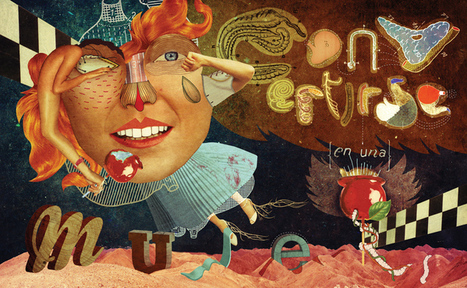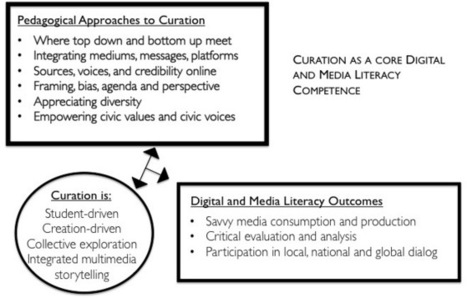
|
Scooped by
Robin Good
July 26, 2013 11:17 AM
|
Ashley Hutchinson has an excellent article on the NWP site, illustrating how content curation can be effectively used to move students from passively memorizing information that they have no interest into, to become active investigators of a topic to uncover its different facets and critical evaluators of the same in light of their own values.
Her key goal was to find a way to make "research" something fun to do for her students.
"I wanted students to be able to funnel their interests into a more authentic academic experience so that they could learn about what they want to learn about and become empowered as researchers, both casually and formally.
To do that, I needed to remix their idea of what research is, transform it from something boring and arbitrary into something rich and useful.
When I don't know something, I look it up... So I called this an "argument curation" project, and not just to sound fancy; they were actually identifying arguments and curating resources that helped inform those arguments."
The beauty of this approach is that students need to check and research the different aspects of a story, to see it through and to develop their own viewpoint relative to it. And here is the a good example of how this can be achieved:
"...They had to find the resources and think carefully about what the resources were actually saying, so that their collections contained diverse opinions and ways of expressing them.
...On their websites, they described the general topic, created page for five different arguments and gave a breakdown of why people are debating those topics.
Then they had to set out to find resources, but not just any resources, resources that had different perspectives. Even those that were in contention with their own.
After gathering at least three resources on five different argument topics within their area of interest, the students summarized the perspectives they saw in the diverse resources that they found.
After being exposed to all of these resources and having some time to think, they themselves entered into the conversation by giving their opinion and referencing the sources that helped inform their opinion.
By having a conversation with their resources, students found themselves **thinking** instead of repeating, synthesizing instead of summarizing."
I don't want to spoil any further your reading of the original which includes some inspiring info about the effects that such an approach can have on students and on their ability to look at the information that they are exposed to.
Excellent resource for educators considering curation in their program.
Insightful. Useful. 9/10
Full article: http://digitalis.nwp.org/resource/5227



 Your new post is loading...
Your new post is loading...
















An excellent story for lecturers or teachers thinking in content curation as a tool in their aulas.
Useful for educators - key digital literacy skill
content curation and critical thinking skills